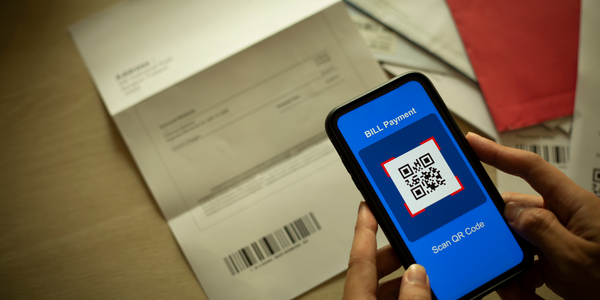
Technology Category
- Application Infrastructure & Middleware - Data Exchange & Integration
- Application Infrastructure & Middleware - Middleware, SDKs & Libraries
Applicable Industries
- Equipment & Machinery
- Transportation
Applicable Functions
- Logistics & Transportation
Use Cases
- Last Mile Delivery
- Time Sensitive Networking
Services
- System Integration
- Training
The Customer
La Poste
About The Customer
La Poste is the largest mail delivery provider in France, with postal activities comprising over half of its revenue. The company employs over 90,000 mail and parcel carriers who are responsible for delivering 23 billion items annually. The carriers operate in offices and distribution centers across the country. To ensure efficient delivery, they relied on low-end smartphones with an Android application integrated with open-source barcode scanning software. However, the company was facing challenges with scanning speed and precision, leading to delivery errors and affecting its reputation.
The Challenge
La Poste, France’s largest mail delivery provider, was facing challenges with its delivery process. The company, which employs over 90,000 mail and parcel carriers, is responsible for delivering 23 billion items annually, making operational efficiency a top priority. The carriers relied on low-end smartphones with an Android application integrated with open-source barcode scanning software for proof of delivery, track and trace, and other workflows. However, the scanning speed and precision were not up to the mark, leading to delivery errors. Misdelivered mail or parcels not only cost the company time and money but also affected its reputation. La Poste wanted to compare the performance of smartphones using open source scanning against those using proprietary software across a wide variety of devices, under a range of challenging real-world conditions.
The Solution
La Poste decided to replace the open-source barcode scanning with Scandit-powered smartphone scanning. A trial was conducted where a number of mail carriers were equipped with a version of the application integrated with the Scandit Barcode Scanner SDK. The trial revealed that Scandit outperformed the open-source alternative across all the Android models tested. The Scandit-powered app provided faster and more reliable scanning, generating zero incorrect scans. It worked efficiently even in low light, glare, at awkward angles, and on damaged barcodes. Following the successful trial, La Poste deployed the Scandit-powered app on over 90,000 smartphone devices. The Scandit solution could perform concurrently with La Poste’s existing data capture capability and devices, allowing for a smooth, incremental rollout with minimum disruption.
Operational Impact
Quantitative Benefit

Case Study missing?
Start adding your own!
Register with your work email and create a new case study profile for your business.
Related Case Studies.

Case Study
Smart Water Filtration Systems
Before working with Ayla Networks, Ozner was already using cloud connectivity to identify and solve water-filtration system malfunctions as well as to monitor filter cartridges for replacements.But, in June 2015, Ozner executives talked with Ayla about how the company might further improve its water systems with IoT technology. They liked what they heard from Ayla, but the executives needed to be sure that Ayla’s Agile IoT Platform provided the security and reliability Ozner required.

Case Study
IoT enabled Fleet Management with MindSphere
In view of growing competition, Gämmerler had a strong need to remain competitive via process optimization, reliability and gentle handling of printed products, even at highest press speeds. In addition, a digitalization initiative also included developing a key differentiation via data-driven services offers.

Case Study
Predictive Maintenance for Industrial Chillers
For global leaders in the industrial chiller manufacturing, reliability of the entire production process is of the utmost importance. Chillers are refrigeration systems that produce ice water to provide cooling for a process or industrial application. One of those leaders sought a way to respond to asset performance issues, even before they occur. The intelligence to guarantee maximum reliability of cooling devices is embedded (pre-alarming). A pre-alarming phase means that the cooling device still works, but symptoms may appear, telling manufacturers that a failure is likely to occur in the near future. Chillers who are not internet connected at that moment, provide little insight in this pre-alarming phase.

Case Study
Premium Appliance Producer Innovates with Internet of Everything
Sub-Zero faced the largest product launch in the company’s history:It wanted to launch 60 new products as scheduled while simultaneously opening a new “greenfield” production facility, yet still adhering to stringent quality requirements and manage issues from new supply-chain partners. A the same time, it wanted to increase staff productivity time and collaboration while reducing travel and costs.

Case Study
Integration of PLC with IoT for Bosch Rexroth
The application arises from the need to monitor and anticipate the problems of one or more machines managed by a PLC. These problems, often resulting from the accumulation over time of small discrepancies, require, when they occur, ex post technical operations maintenance.

Case Study
Robot Saves Money and Time for US Custom Molding Company
Injection Technology (Itech) is a custom molder for a variety of clients that require precision plastic parts for such products as electric meter covers, dental appliance cases and spools. With 95 employees operating 23 molding machines in a 30,000 square foot plant, Itech wanted to reduce man hours and increase efficiency.



